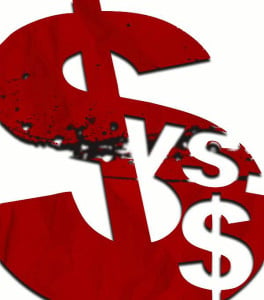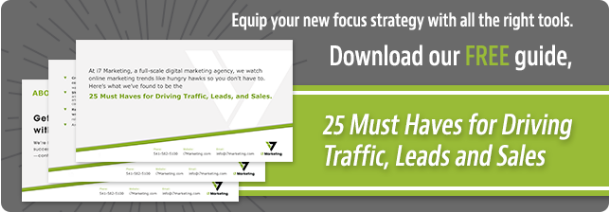Pricing of your product or service is one of the most vital decisions you can make in your business. Yet, if your company is like many, you may decide on the price based on judgment without objectively assessing how customers value the different components of your offering. As a result, you may undervalue the products and services you sell and not capture the inherent profits you can earn.
Buyers assess the perceived value and price of a product before deciding what they are willing to pay. Since both perceived value and price are arbitrary, how you market your products and services can influence both. The questions you need to answer are who you are selling to and what segment of the market you want to influence.

Definition of Value and Price
ValueAccording to the Merriam Webster Dictionary, value is defined as:
- “a fair return or equivalent in goods, services, or money for something exchanged”
- “the monetary worth of something”
- “relative worth, utility, or importance”
Price
Merriam Webster defines price as:
- “the quantity of one thing that is exchanged or demanded in barter or sale for another”
- “the amount of money given or set as consideration for the sale of a specified thing”
On the surface, it appears that the definitions of value and price are similar. However, in the mind of the buyer, they are very different. While the price of a product may be the same for everyone, the value varies. Each buyer has a very different value for a product. It’s only when you are able to equate its value with the price that you can make a sale.
Cost
There is one more layer to this conundrum. It is cost. Merriam Webster defines cost as:
- “the amount or equivalent paid or charged for something, price”
- “the outlay or expenditure made to achieve an object”
- “loss or penalty incurred, especially in gaining something”
As you can see, there is a distinct difference between price and cost. Price involves gaining something in the exchange, whereas cost is the loss of something in the exchange.
Zig Ziglar, the famous salesman, wrote,
“Price is a one-time thing and cost is a lifetime thing.”
Two Types of Customers
There are basically two types of customers in every market. These two types are customers who shop for quality and those who shop for price. According to research that the Journal of Consumer Research published in October 2012, consumers make different conclusions about the same product. For some consumers, a low price can equate to either good value or low quality, whereas a high price can signify poor value or high quality. The study implies that consumers rarely have complete information about a product, so they form “naïve theories” or common sense explanations such as the assumption that a popular product must be of high quality.
The price of a product can influence consumer perception of value. For example, consumers may perceive a more expensive product as higher quality than a lower priced product, yet they may perceive the lower priced product as providing more value.
However, lower prices do not always equate to greater value. If a consumer believes they are getting a good deal, then lower prices can help get you the sale. On the other hand, low prices can also give the impression that the product is of low quality.
Holiday Shopper Dilemma
The question you must answer when you set a low price is, “Will the customer perceive this as good value or low quality?” This is a challenge that most retailers face each holiday season when they lower prices to lure shoppers into their stores, according to an article Brad Tuttle wrote for Time Magazine in November, 2012. Some shoppers will rush to buy products with rock bottom prices, whereas other customers become hesitant because they equate the low-priced product with poor quality.
The funny thing is that consumers do not always know why they buy. Steve Posavac, professor of marketing at Vanderbilt University and author of the study the Journal of Consumer Research published highlighted above says “Most people simultaneously believe that low prices mean good value, and that low prices mean low quality.” This poses a dilemma for the shopper and a big challenge for you when marketing your products and services, but the study also shows that you can coax consumers to focus more on quality. This in turn increases the consumer’s perception of value.
Influence Your Customers with Persuasive Communication
Persuasive communication can shift your customer’s frame of mind. This shift can influence your customer to look at the product as having higher quality and better value. For example, Tuttle explains that in an experiment, participants who read about bamboo being lower priced but more durable material for hardwood flooring equated this as being a good value.
Experiences consumers had recently with respect to their finances and other products purchased can influence perceptions. For example, if your customers are struggling to pay their bills, they may be more susceptible to value low priced products. Yet, a customer who had a bad experience with a product that broke down may be more susceptible to value a product with higher quality. Your job is to coax your customer into buying your product with persuasive communication.
The key is to remind consumers about quality. The more you can get your audience thinking your product is higher quality than they may have otherwise thought about your product before, the more likely you can be to get them to view your product more favorably with greater value. This is what can lead you to selling your product at a higher price and bigger profit margin.
Sell Benefits, Not Price
Many companies set the prices of their products based on value. Yet, marketers often misuse “value pricing” for a low-priced product. The true essence of value revolves around the benefits a customer receives from a product and the price the seller offers, according to McKinsey.
The price of a commodity such as water is set by the market, but you can sell water at a premium if you package it the right way and focus on the benefits. Penn and Teller tested consumer response to various packages of bottled water, even though the water source was from the tap and poured through a hose. Each bottle had an exotic name and picture and claimed to come from pristine mountains and streams worldwide. They were each sold at a premium price, as much as over $7.00 per bottle.
Consumers gave different opinions about each water sample they tasted, as if the sources were different. In the end, their experiment proved that packaging can increase the perceived quality and value of a product. As a result, consumers are willing to pay a higher price.
Sell More by Choosing Your Target Market
The most vital thing you need to do to maximize your offering is to choose your target market. Trying to sell to everyone may force you to compromise your price. Instead, focus your sales on customers who will value the products and services you sell. Your best customers are receptive to learning why they should pay more for one brand over another. Narrowing your market allows you to focus your resources on those customers who value your product at the price you want to charge. When you present your product, highlight the benefits and why it has more value than lower priced options. Value can last a long time. It can outlast the price.
John Ruskin, an English writer once said,
“There is scarcely anything in the world that some man cannot make a little worse, and sell a little more cheaply. The person who buys on price alone is this man's lawful prey.”



Submit a Comment
Your email address will not be published. Required fields are marked *